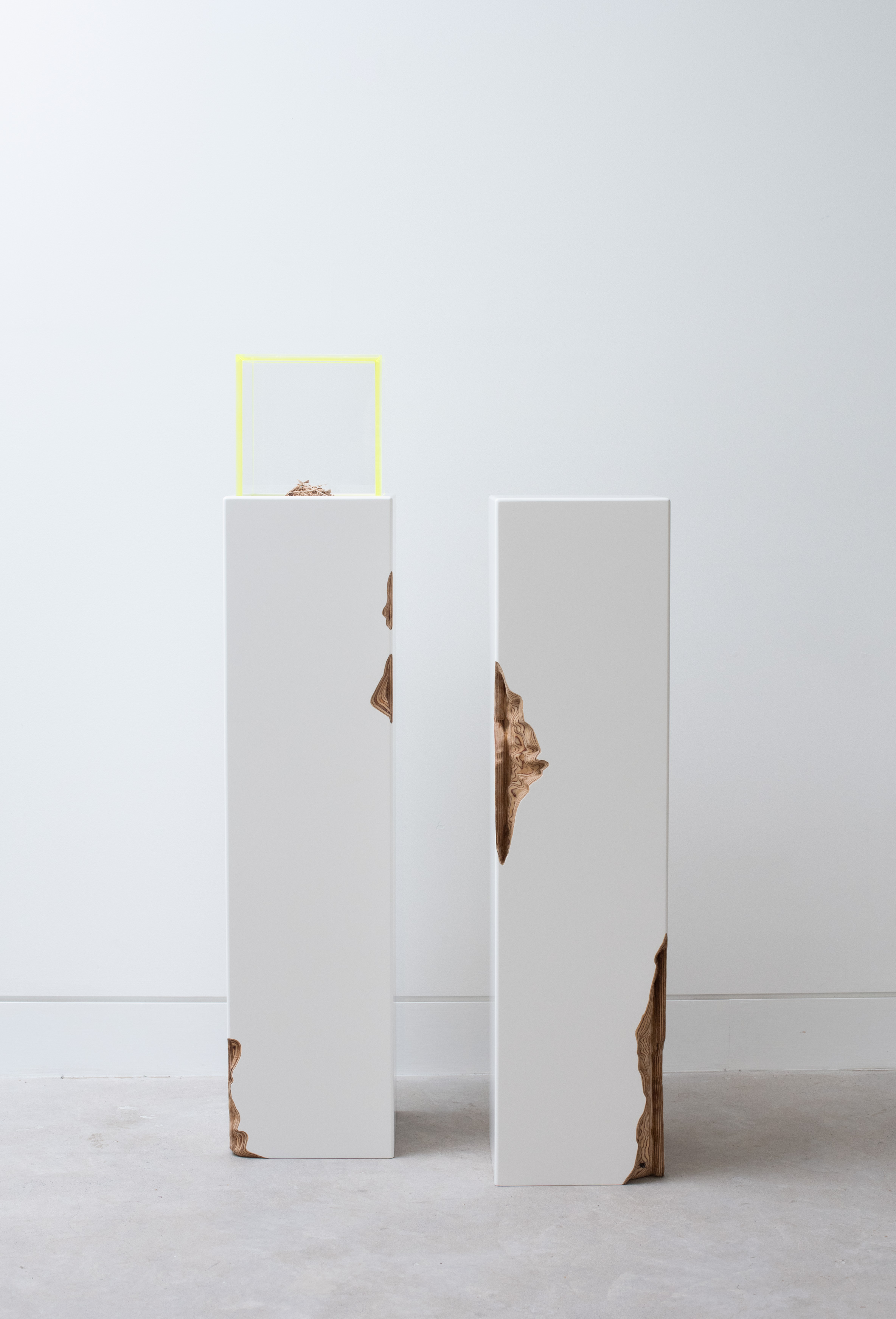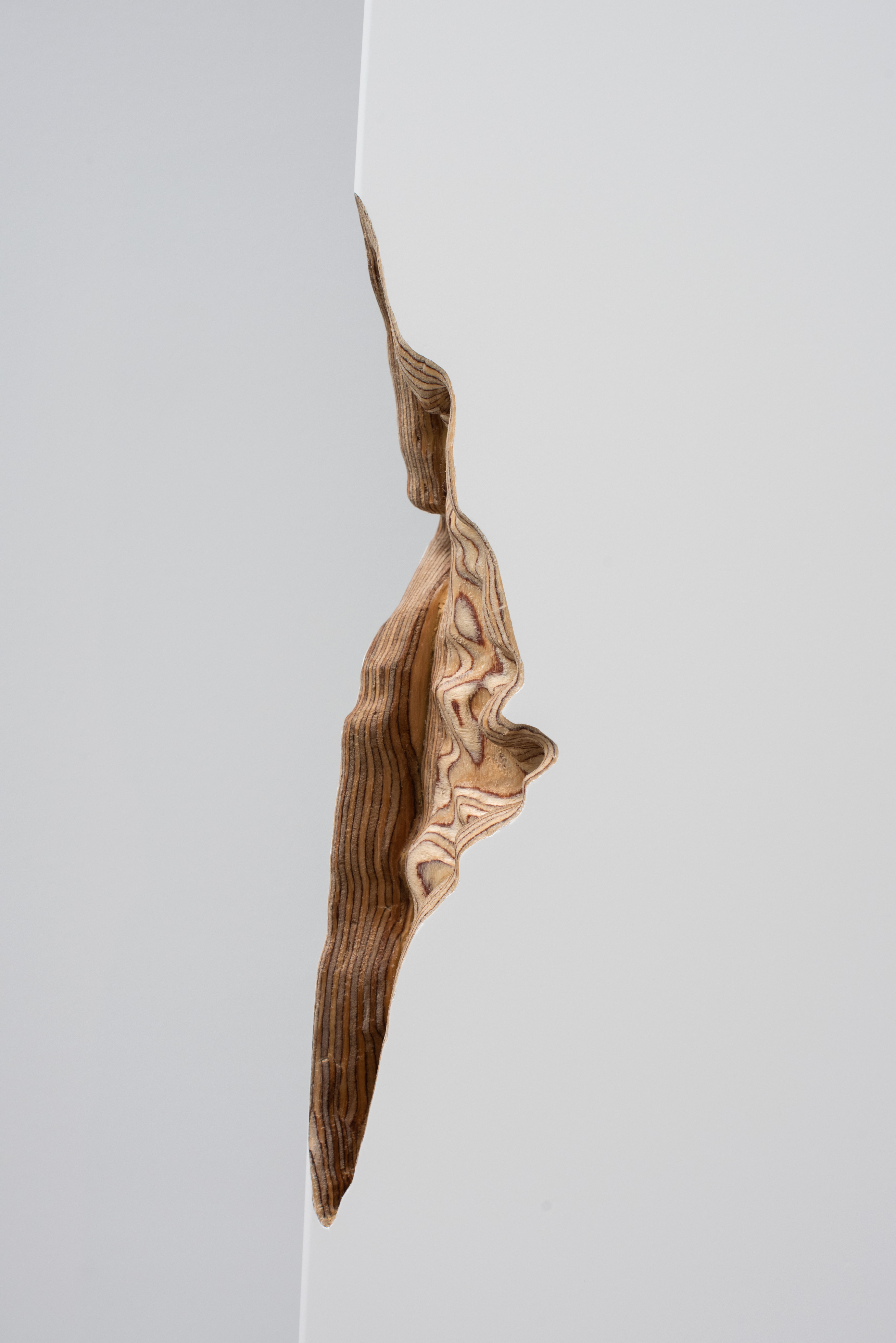Plinth
1. The first thing to consider is that if designers are asked to exhibit in a gallery space, they can design plinths. The built environment as a place of design activity suggests it. This is both trivial and emblematic of the totalising capacities of design.
2. One of the plinths exhibits nothing. The other exhibits waste.
3. Waste indicates the gravity of the environment context in which design operates. Sawn, hacked and milled from the plinths, the waste exposes the transformation of material from natural resource to product of design. In consideration of the grave existential threats created by such transformations, we propose that no designer, maker, producer or artist can avoid a scrutiny of practice. All methods of making, all supply chains and modes of production are suspect until proven otherwise. (Even in the case of a plinth, that might otherwise make two inferences: a. that art objects they exhibit have limited production and lack environmental impact, or b. a conceptual invisibility in deference to the objects they exhibit and the capacity to disregard their material context for attention to another conceptual concern. Neither of these inferences are true or ethical).
4. The exhibition of nothing draws attention to the functionality of the plinth. It also proposes nothing as an aspirational goal for design, because today there is a greater need for designers to do nothing more than something, and to unmake, instead of make.
‘Designart’ is a relatively recent term. I’m not a huge fan of the term, but it does somewhat categorize some of the work I do by myself and with collaborator Kyoko Hashimoto. Well established in Europe, its market is mostly still emergent in Australia, but inroads are being made, for example by Gallery Sally Dan-Cuthbert, our gallery representation in Sydney.
As a sustainability minded practitioner, I’m curious about the contemporary art market. I think the context of contemporary art carries an assumption that sustainability qualities used to critique mass produced goods – for example, low emissions production, waste byproduct, material toxicity, repairability or recyclability– are only fair criteria for assessing contemporary art, or designart, when such criteria are conceptually proposed by the artist themselves. No doubt there is excellent and sometimes radical artwork being made that pushes our understanding of what sustainability is and how it can be achieved, even beyond that of what is being achieved in the critical, speculative or sustainable modes of design.
But I suspect too, that the typical curator or art critic does not consider it appropriate or relevant to evaluate the sustainability of an artwork -–whether material selection or manufacture or ideological intent – unless it is explicitly or implicitly framed by sustainability. But given the scale of art production worldwide, its emissions and supply chain impacts, and the responsibility of contemporary art in cultural leadership, I’m calling that out. Should there be exceptions given the ecocidal shitstorm coming our way this century?
As critical design, this work explores the typology of the ‘plinth’, as both functional product and gallery infrastructure typically trivialised or deemed unimportant to the value of the artwork, to consider the question of whether the art world and its market should sit inside or outside sustainability frameworks used to assess other manufactured objects.
I concede that the design industry itself is still extremely negligent in this regard, and unjustifiably so given its greater environmental impact through mass production.
The work was commissioned by Gallery Sally Dan-Cuthbert, Australia’s first gallery devoted to the collectible design market and exhibited at the gallery’s 2019 inaugural group show, a show reported in major Australian news media including YellowTrace, Art Collector and the Australian Financial Review. The work was then shown during Melbourne Design Week 2020 at Gallery Sally Dan-Cuthbert’s show Osmosis at LCI Melbourne.


